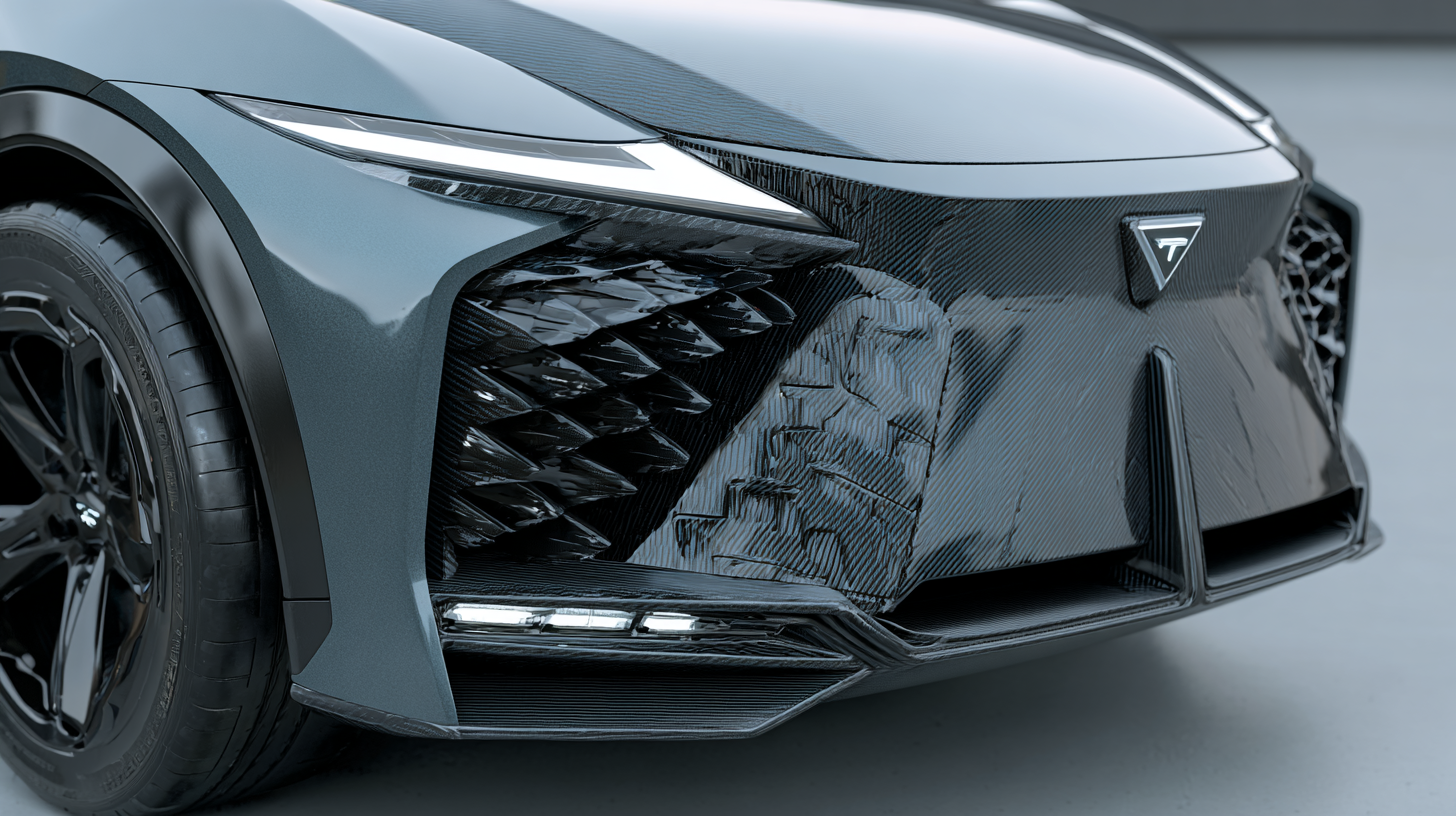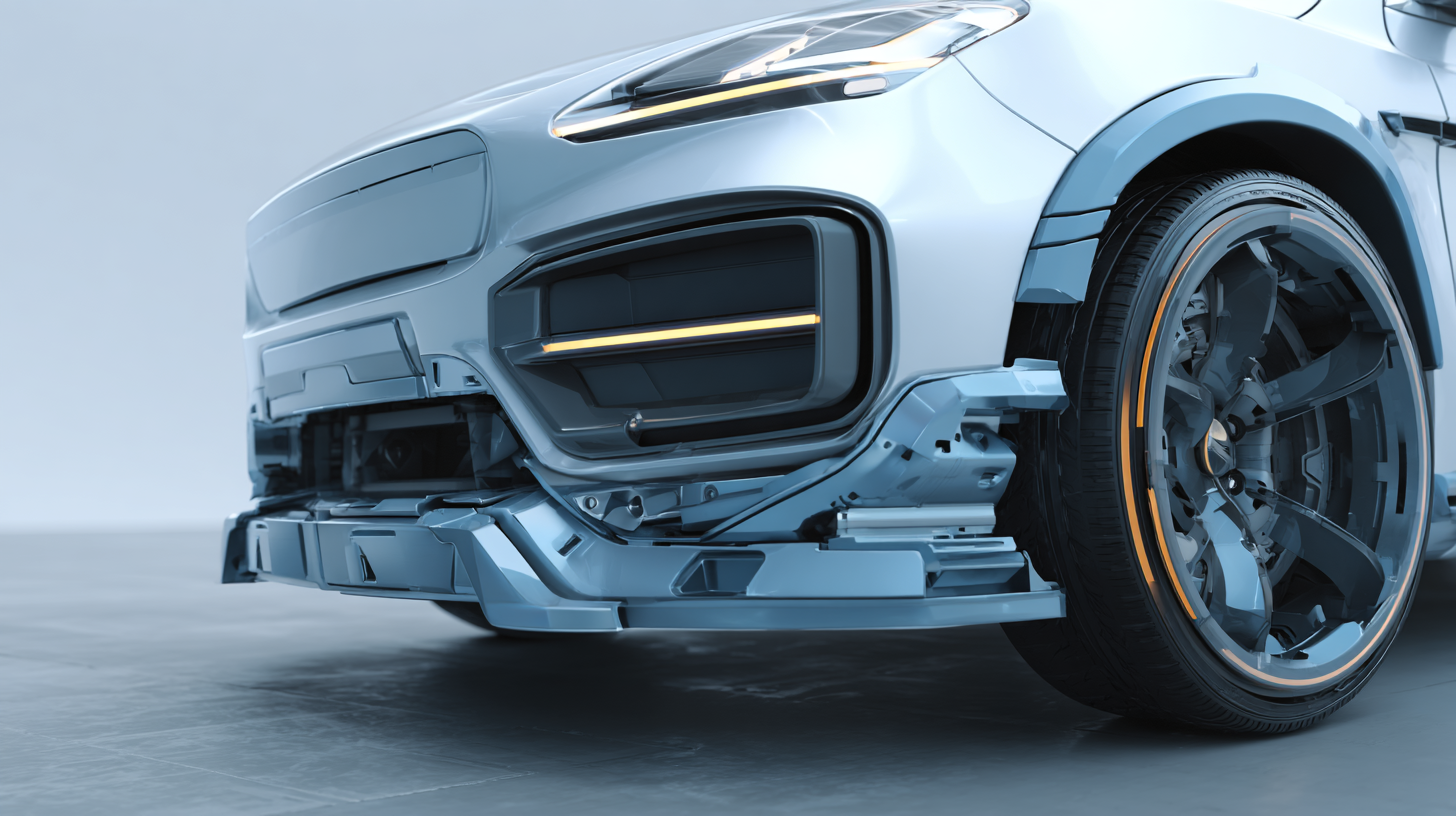
Future Innovations in Car Front Bumper Technology for 2025
As we look forward to the innovations slated for 2025, the automotive industry is poised for a significant transformation in various aspects, particularly in the realm of Car Front Bumper technology. This critical component of vehicle design not only serves as a protective barrier but also plays a pivotal role in enhancing safety, aesthetics, and functionality. With advancements in materials, design methodologies, and smart technology integration, the future of Car Front Bumper systems promises to be more resilient, impact-absorbent, and environmentally friendly. In this blog, we will explore the emerging trends and technologies that are set to redefine Car Front Bumpers, as well as the top strategies manufacturers can adopt to stay ahead in this rapidly evolving landscape. Join us as we delve into the possibilities and innovations that could shape the next generation of automotive design.

Emerging Materials: Enhancing Durability and Eco-Friendliness in Bumper Design
The automotive industry is witnessing a groundbreaking shift in bumper technology as we head towards 2025, with a significant focus on the emergence of advanced materials that enhance both durability and eco-friendliness. According to a recent report by MarketsandMarkets, the global automotive plastic market is expected to reach $42 billion by 2026, driven largely by innovations that replace traditional metals with lightweight and resilient composites. This shift not only improves fuel efficiency through decreased vehicle weight but also enhances the ability of bumpers to absorb impact without deforming, thereby providing better protection.
In addition to performance, sustainability is becoming a pivotal concern for manufacturers. Research from Smithers Pira indicates that the demand for recycled materials in automotive applications is projected to grow by 20% annually. New materials, such as bio-based plastics derived from renewable resources, are emerging, combining strength with a reduced carbon footprint. Implementing these sustainable materials in bumper design not only meets regulatory demands for environmental responsibility but also resonates with consumers increasingly advocating for green automotive products. As automotive designs evolve, the integration of these innovative materials will play a critical role in shaping the future of bumper technology.
Future Innovations in Car Front Bumper Technology for 2025
This chart illustrates the projected adoption rates of emerging materials in car front bumper designs by 2025. The materials are evaluated based on their durability and eco-friendliness, highlighting the shift in automotive design towards sustainability.
Smart Features: Integrating Technology for Enhanced Safety and Performance
As we approach 2025, the evolution of car front bumper technology is set to redefine safety and performance through smart features. Today’s bumpers are no longer just structural components; they have become sophisticated systems that house sensors and cameras designed to enhance vehicle safety. Innovations such as adaptive pedestrian detection and automated emergency braking systems are being integrated directly into bumpers, allowing vehicles to respond proactively to potential collisions.
Tip: When considering a new vehicle, pay attention to bumper technology and its features. Some models now offer enhanced imaging systems that provide a 360-degree view around the car, which can significantly aid in parking and maneuvering in tight spaces.
Another exciting advancement is the incorporation of lightweight materials and active aerodynamics in bumper design. These innovations not only improve fuel efficiency but also contribute to better overall vehicle dynamics. Future bumpers may even include built-in displays to communicate with pedestrians or other vehicles, creating a safer driving environment.
Tip: Always inquire about the specific smart features available in the bumper technology when shopping for a car, as these can vary significantly between models and have a profound impact on the driving experience and safety.
Aerodynamic Innovations: Improving Fuel Efficiency and Stability
In the pursuit of enhanced fuel efficiency and vehicle stability, the automotive industry is increasingly focusing on aerodynamic innovations in car front bumper technology. By reducing aerodynamic drag, vehicle performance can be significantly improved, resulting in better fuel economy and driving comfort. Modern designs are integrating features such as streamlined shapes and lightweight materials to minimize resistance and enhance flow dynamics around the vehicle.

Moreover, the implementation of advanced technologies such as movable wings and winglet devices is gaining traction. These innovations not only contribute to lower fuel consumption but also optimize vehicle handling at varying speeds. For example, adjustable wing structures can alter their angles during different driving conditions, maximizing aerodynamic efficiency and stability. As the industry continues to prioritize sustainability alongside performance, these advancements signal a promising direction toward meeting the challenges of a carbon-neutral future, all while maintaining the comfort and safety that consumers expect from modern automobiles.
Customization Options: Personalizing Bumper Aesthetics and Functionality
As we move towards 2025, car front bumper technology is set to revolutionize both aesthetics and functionality, with customization options leading the charge. Vehicle owners will have the opportunity to personalize their bumpers according to their individual styles and preferences. From sleek, aerodynamic designs to rugged, off-road configurations, customization is poised to cater to a wide range of tastes and lifestyles. Innovative materials like lightweight composites and advanced polymers will allow for intricate designs while maintaining durability and impact resistance.

Comparative Analysis: Current vs. Future Bumper Technologies and Their Impact
As we look toward 2025, the evolution of car front bumper technology promises to bring significant changes compared to current designs. Traditional bumpers prioritize merely physical protection, absorbing impact through rigid materials. However, future innovations are set to introduce a synergy of advanced materials, smart sensors, and integrated safety features that will not only protect passengers but also enhance vehicle performance. By utilizing lightweight composites and energy-absorbing structures, these new bumpers will minimize damage in collisions, potentially reducing repair costs and improving fuel efficiency.
Tip: When considering your next vehicle purchase, pay attention to bumper technology. Look for models that offer not just durability, but also smart features that actively enhance safety and driving experience.
The shift from passive to active bumper systems will also redefine how vehicles interact with their environment. Future bumpers will likely be equipped with sensors that detect obstacles and pedestrians, enabling automatic adjustments in vehicle speed or direction to prevent accidents. This innovation suggests a future where bumpers are not just a frontline defense but proactive measures in road safety.
Tip: Stay informed about upcoming car models and their bumper technologies. Engaging with user reviews and tech specifications can help you make a more informed decision about vehicle safety features.



